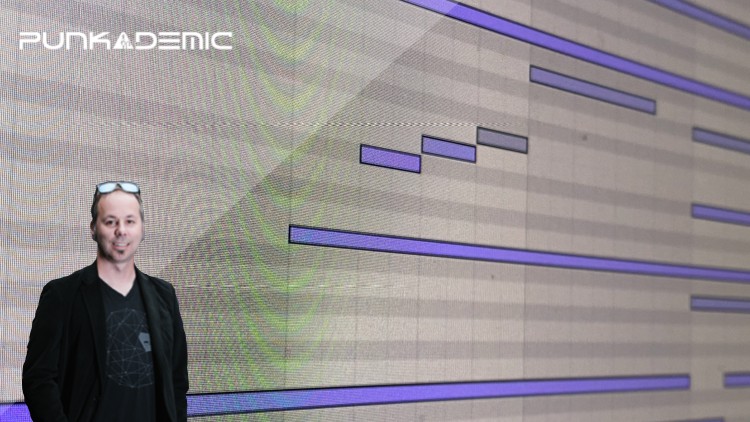
Electronic music theory, digital music theory, and dance music theory. Learn music theory with ableton live and more!
What you will learn
By the end of this course, you will have improved your tracks by understanding how to build chords and melodies that work together.
Understand and apply minor chords
Use the circle of fifths to generate new ideas for your own tracks
Work within minor keys to write compelling melodies and basslines
The Piano Roll editor
Octaves
Using Octaves in Bass Lines
The Black Keys (not the band!)
Finding C and Middle C
The Perfect 5th
Finding Fifths
Being “in key”
The pattern of a key
Moveable Patterns
The major and minor third
Building triads
Chord progressions
What is diatonic?
Finding all the chords in a key
Using roman numerals
Inversions
7th chords
Maj7 and minor 7th chords
Dominant 7th chords
Blues and the 7th chord
Analysis: Shame On Me (Avicii)
Minor scales
Relative keys
Minor diatonic chord progressions
Analysis: Ghosts N Stuff (Deadmau5)
Changing keys in your track
Analysis: Get Luck (Daft Punk)
9th and 13th chords
Suspended Chords
Writing melodies for chord progressions
Writing chord progressions for melodies
Bass lines
Analysis: Windowlicker (Aphex Twin)
Modes
How modes work
Producing with Modes
Pentatonic Scales
Chromatic Mediants
Creating music with music theory
Exotic scales
Description
** UDEMY BESTSELLER **
This course is “5-Star Certified” by the International Association of Online Music Educators and Institutions (IAOMEI). This course has been independently reviewed by a panel of experts and has received a stellar 5-star rating.
100% Answer Rate! Every single question posted to this class is answered within 24 hours by the instructor.
Welcome to the MUSIC THEORY FOR ELECTRONIC MUSIC COMPLETE Guide!
This course is a combination of all three of my Music Theory for Electronic Musicians classes: Music Theory for Electronic Musicians, and Music Theory for Electronic Musicians 2, and Music Theory for Electronic Musicians 3.
In this class, we learn how to work with the piano roll editor in a DAW to make harmonies, melodies, and whole tracks, and then we expand on those ideas and work with harmonic patterns (harmony) that is richer than just major and minor.
Production Techniques Through Theory The most important part of this class is an extensive foray into using these techniques in actual tracks. I’ll be creating 9 tracks through this class, right along with you, each using a different technique so you can see exactly how I incorporate it right into my music.
Full Sessions After each production project, I’ll give you the whole session of what I made using the techniques for you to play with. You can download it, expand on it, re-work it, and even release it as your work.
If Your Music is Missing Something, This is Probably It. If you are finding that you are writing track after track, and while they sound good, there is something they are missing – then this it. You are missing the sense of harmony that professional producers have. In this class, I’ll arm you with all the tools you need to produce those tracks just like you imagine them.
Who should take this course?
Anyone interested in producing their own music. This will get you up and running and give your tracks a unique sound in no time.
Structure
This course consists of video lectures, which all contain a session in Ableton Live 9. If you are using a different program (or none at all), no worries! This isn’t a class on how to use Ableton Live, and the concepts can be applied to any DAW.
Some of the step-by-step guides in this course will be:
- Finding notes, chords, and keys in your audio program
- The 7 intervals and how to put them together
- The steps to finding the key of your track (or any track!)
- The most common chord progressions
- The steps to using inversions to take your track from good to amazing.
- The 4 types of 7th chords
- The top techniques for writing a melody to fit a chord progression (and vice-versa!)
- The 7 modes and their uses
- 19 Exotic scales and how to use them (include MIDI files!)
The course is a roadmap to finding the missing piece in your tracks, or just getting started making great tracks.
All the tools you need to make, produce, and start your music career are included in this course, and the entire course is based on real-life experiences – not just academic theory.
Please click the “Take This Course” button so you can start making great tracks today.
** I guarantee that this course is the most thorough music theory course available ANYWHERE on the market – or your money back (30-day money-back guarantee) **
Closed captions have been added to all lessons in this course.
———————————————————————
Praise for Courses by Jason Allen:
⇢ “It seems like every little detail is being covered in an extremely simple fashion. The learning process becomes relaxed and allows complex concepts to get absorbed easily. My only regret is not taking this course earlier.” – M. Shah
⇢ “Great for everyone without any knowledge so far. I bought all three parts… It’s the best investment in leveling up my skills so far..” – Z. Palce
⇢ “Excellent explanations! No more or less than what is needed.” – A. Tóth
⇢ “VERY COOL. I’ve waited for years to see a good video course, now I don’t have to wait anymore. Thank You!” – Jeffrey Koury
⇢ “I am learning LOTS! And I really like having the worksheets!” – A. Deichsel
⇢ “The basics explained very clearly – loads of really useful tips!” – J. Pook
⇢ “Jason is really quick and great with questions, always a great resource for an online class!” M. Smith
—————————————————————————-
Students who register for this course will receive ongoing exclusive content and discounts to all future classes in the series.
Content